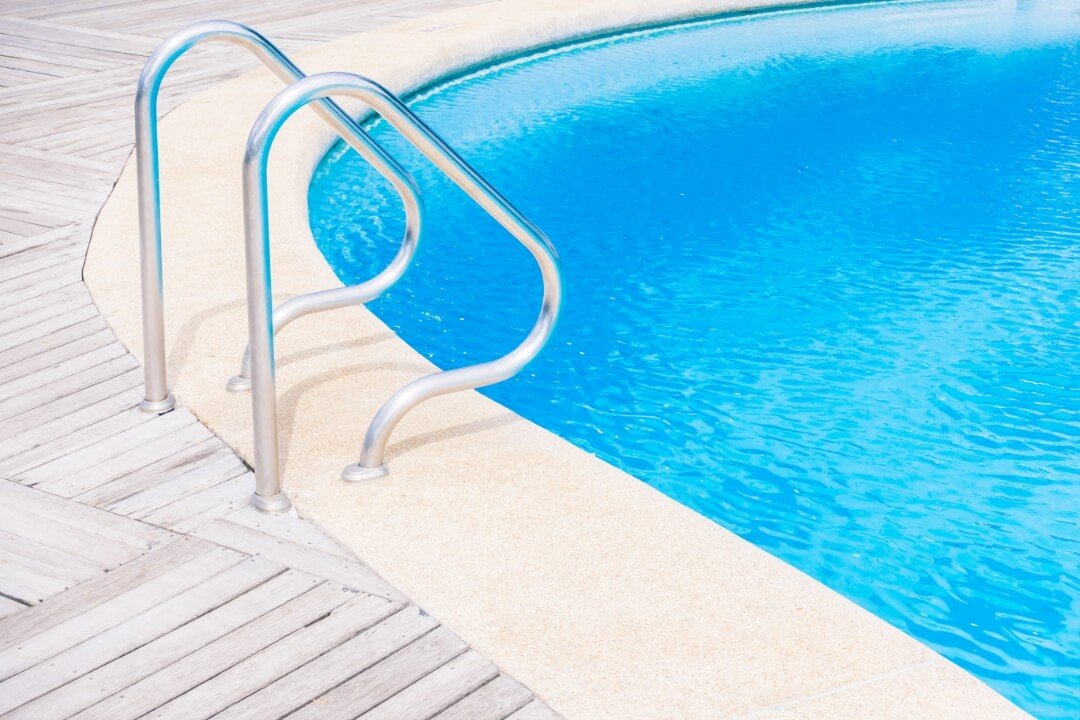
There are 3 types of swimming pool structures
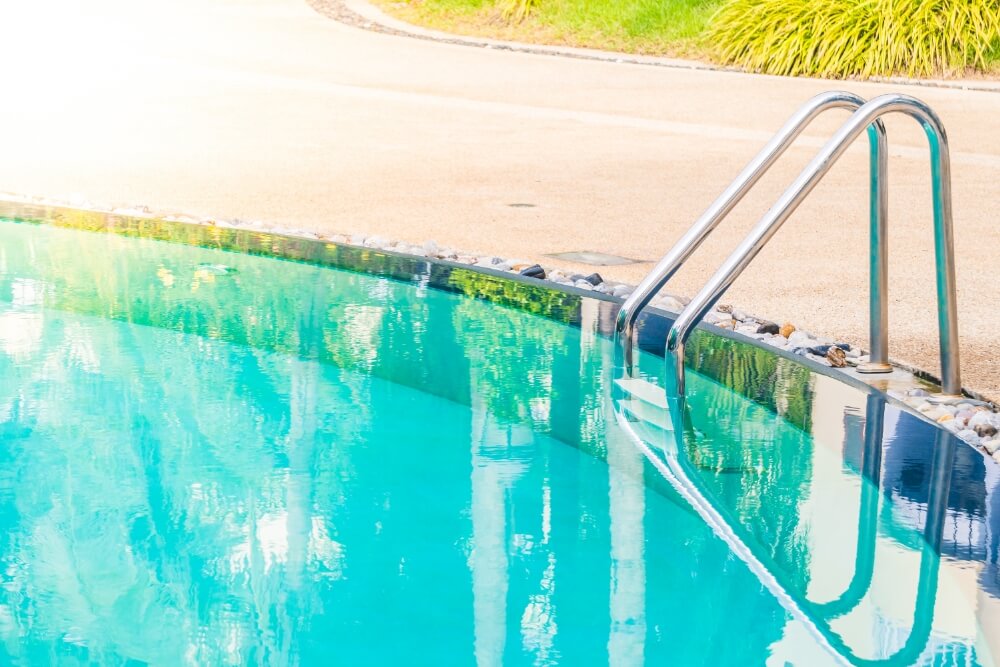
1.) Build a swimming pool with concrete material or build a cement pool
It is decorated with tiles on the pool structure and able to design the pool in different shapes as the owner wants. They can also choose materials like mosaics in different colors as they like. The concrete swimming pool features can be built according to the hosts preferences such as having surface type or skimmer and overflow system Concrete swimming pools are pools used by businesses that want the pool to be outstanding and attractive for use in hotels, villas, resorts etc.
2.) Fiber glass swimming pool
It is a swimming pool constructed with many layers of fiber glass material until it becomes a very strong and durable structure. The fiberglass manufacturing process is used in a variety of industries, such as the automobile component fiberglass boats or yachts etc.
Compared to concrete swimming pools, Fiberglass pool structures have the advantage of a faster construction time, this takes an average of installation of 7 days, while a concrete pool can take an average of 3 – 4 months.
The limitation of fiberglass swimming pools is the shape of the structure is fixed, because the production is required to produce according to the molding design.
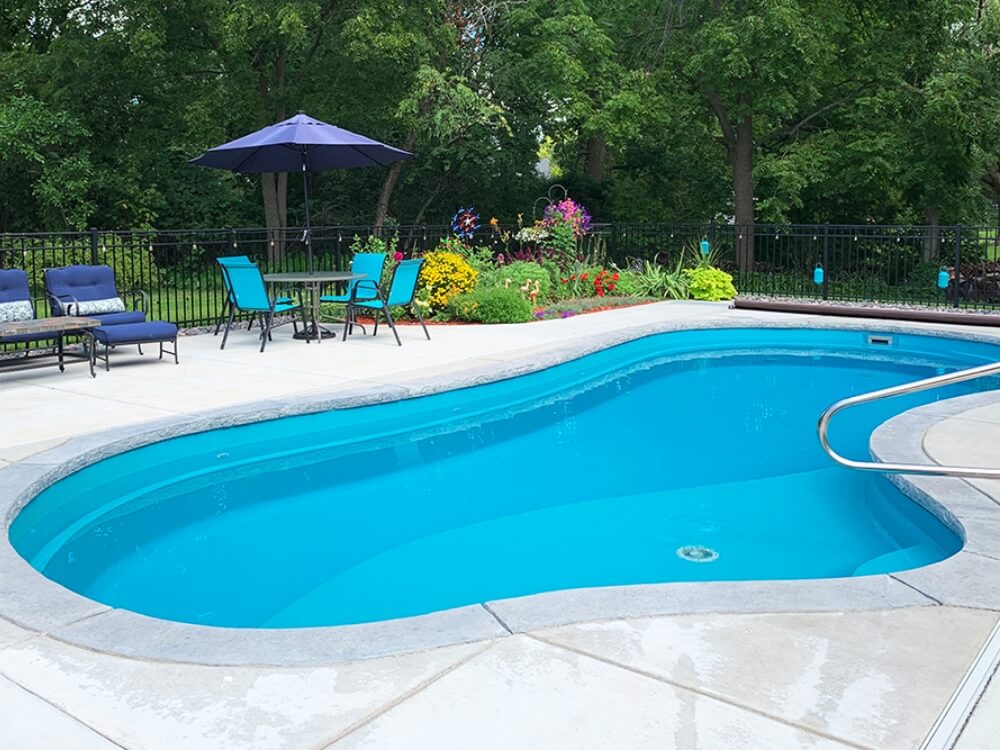
2.) Fiber glass swimming pool
It is a swimming pool constructed with many layers of fiber glass material until it becomes a very strong and durable structure. The fiberglass manufacturing process is used in a variety of industries, such as the automobile component fiberglass boats or yachts etc.
Compared to concrete swimming pools, Fiberglass pool structures have the advantage of a faster construction time, this takes an average of installation of 7 days, while a concrete pool can take an average of 3 – 4 months.
The limitation of fiberglass swimming pools is the shape of the structure is fixed, because the production is required to produce according to the molding design.

3.) Swimming pool with vinyl material or pool liner
It’s a swimming pool made of sheet-like material, but it’s not a material that can be teared easily. Vinyl is a material designed to use with water and mostly it used for pool foundation. The pool structure that will be put on top could be metal or concrete.
Vinyl swimming pools are another option that can help pool owners save on pool construction budgets and time. Comparatively to tiled swimming pools, it can be installed faster.
For the price of each type of swimming pool. There are different prices as follows

1.) Concrete tiled swimming pools are priced at the upper level and are higher than other types of pools.
2.) Fiberglass swimming pool priced in the middle level and lower than concrete pools.
3.) Vinyl swimming pools cost the lowest.
How many systems does the swimming pool have ?
There are two types of swimming pool systems that widely used:

1.) Over Flow System
It is the system that has the best water circulation of the swimming pool. Pool edge water looked clean and beautiful. There are no residual suspended solids on the water surface and no stain on the edge of the pool. The Over Flow system consists of
Swimming pool
Surge Tank (water reserve tank), private swimming pools have a capacity of 5-10% of the pool’s water in volume, service pools have 10-15% of the pool’s water in volume. This depends mainly on the number of users and the depth of the Surge Tank.
Filtration operational Room
Water pump will suck water from the Surge Tank through the filter. through the disinfection system and dispense to the floor of the pool (Floor Inlet) using the treated well water and then pushing up the leaves, dust particles will be pushed out of the pool into the trough back to the water reserve tank. Further the floats will release water into water tank to replace the lost volume of water due to evaporation Including washing the filter, etc. In addition, in the water reserve tank there is also an overflow pipe, to drain when the water level exceeds the demand
Over flow system is suitable for areas that are wide enough to accommodate the elements of the pool
2.) Skimmer system
Skimmer systems are built and installed without a water reserve tank. Thus, saving space and the cost of making a water reserve tank. when there is no water reserve tank, the Skimmer will suck the water in the pool on the surface along with dirt and debris goes through a filtration system before being sent back to the pool.
The water level of the Skimmer pool therefore needs to be 15-20 cm lower than the edge of the pool in order to reserve water when people swimming. water circulation process that meets the standards of water supply and suction must be opposite each other, for more efficient water circulation when turned on for a while, there will be stains at the water level. There also may be some residual suspensions in the corners of the pool.
A swimming pool with skimmer system is suitable for limited space.

2.) Skimmer system
Skimmer systems are built and installed without a water reserve tank. Thus, saving space and the cost of making a water reserve tank. when there is no water reserve tank, the Skimmer will suck the water in the pool on the surface along with dirt and debris goes through a filtration system before being sent back to the pool.
The water level of the Skimmer pool therefore needs to be 15-20 cm lower than the edge of the pool in order to reserve water when people swimming. water circulation process that meets the standards of water supply and suction must be opposite each other, for more efficient water circulation when turned on for a while, there will be stains at the water level. There also may be some residual suspensions in the corners of the pool.
A swimming pool with skimmer system is suitable for limited space.
Water treatment system
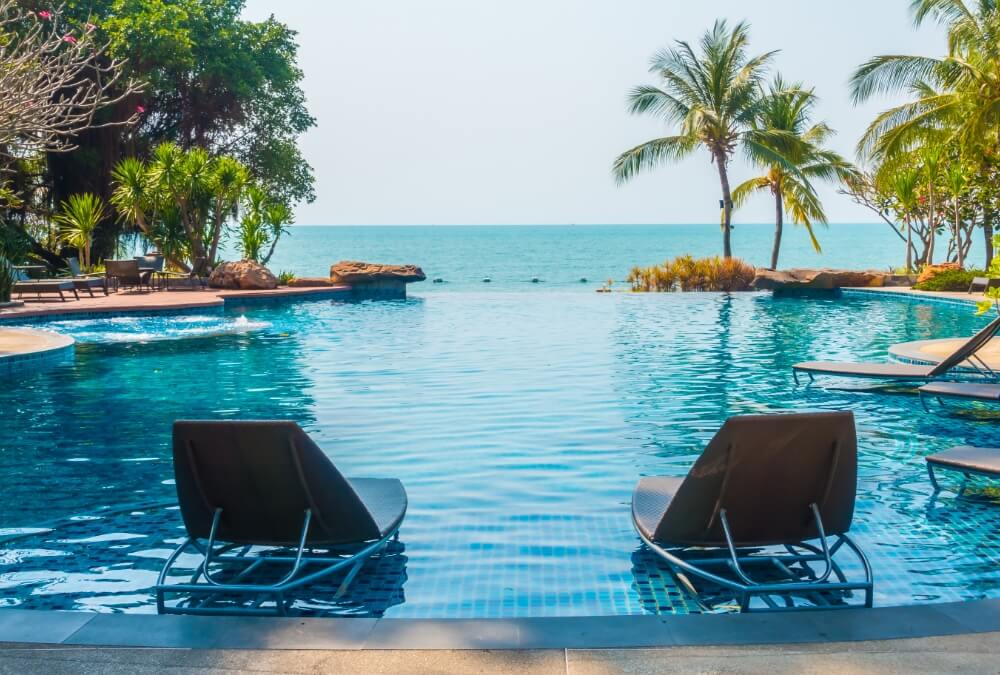
1.) Chlorine system
Chlorine system. Chlorination in the swimming pool is a backward system because whether it is chemical chlorine, powder or liquid both have corrosive properties thus helping to kill germs and moss, which serves as breeding ground for bacteria and cause the water to be cloudy, changes color and it needs to be added frequently. Especially in hot climates Chlorine will evaporate into the air. Therefore, wasting the cost of chemicals and not suitable for healthcare. The smell of chlorine also has a burning effect on the eyes and skin. Nowadays is not it is not very popular in private swimming pools and many people are now turning to salt system
2.) Salt system
Using a salt generator or a “chlorine” generator from salt itself. It is a natural chlorine, but it has a bad chlorine smell. (The smell is less than chemical chlorine). Salt water has a slippery stain on the skin. Corrosive to rust and most importantly, difficult to maintain.
Saltwater swimming pools will often have algae, difficult to get rid of, requiring chemical chlorine to manage or use additional algae killing chemicals.
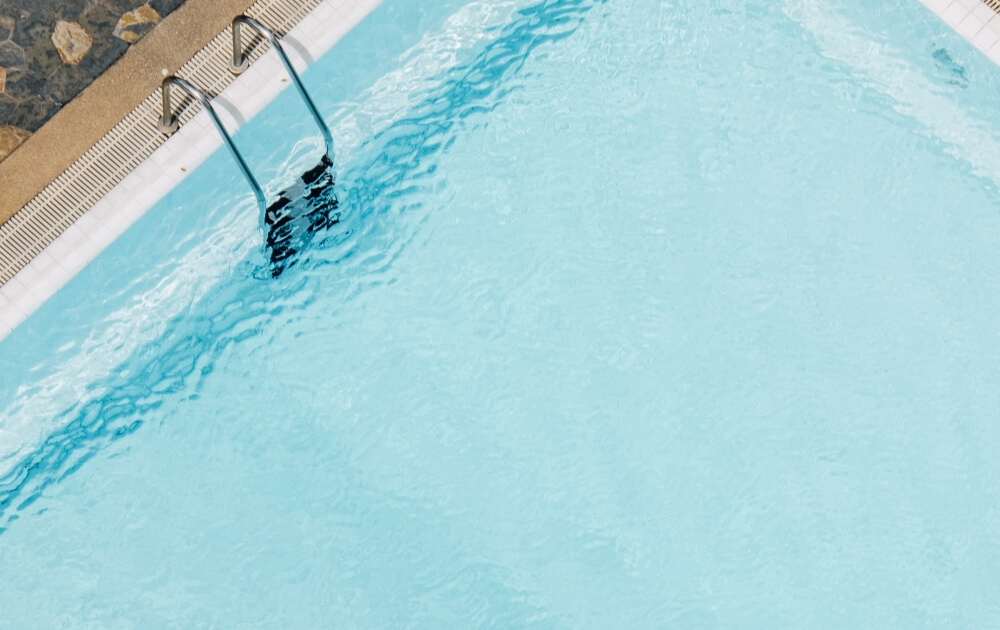
2.) Salt system
Using a salt generator or a “chlorine” generator from salt itself. It is a natural chlorine, but it has a bad chlorine smell. (The smell is less than chemical chlorine). Salt water has a slippery stain on the skin. Corrosive to rust and most importantly, difficult to maintain.
Saltwater swimming pools will often have algae, difficult to get rid of, requiring chemical chlorine to manage or use additional algae killing chemicals.
